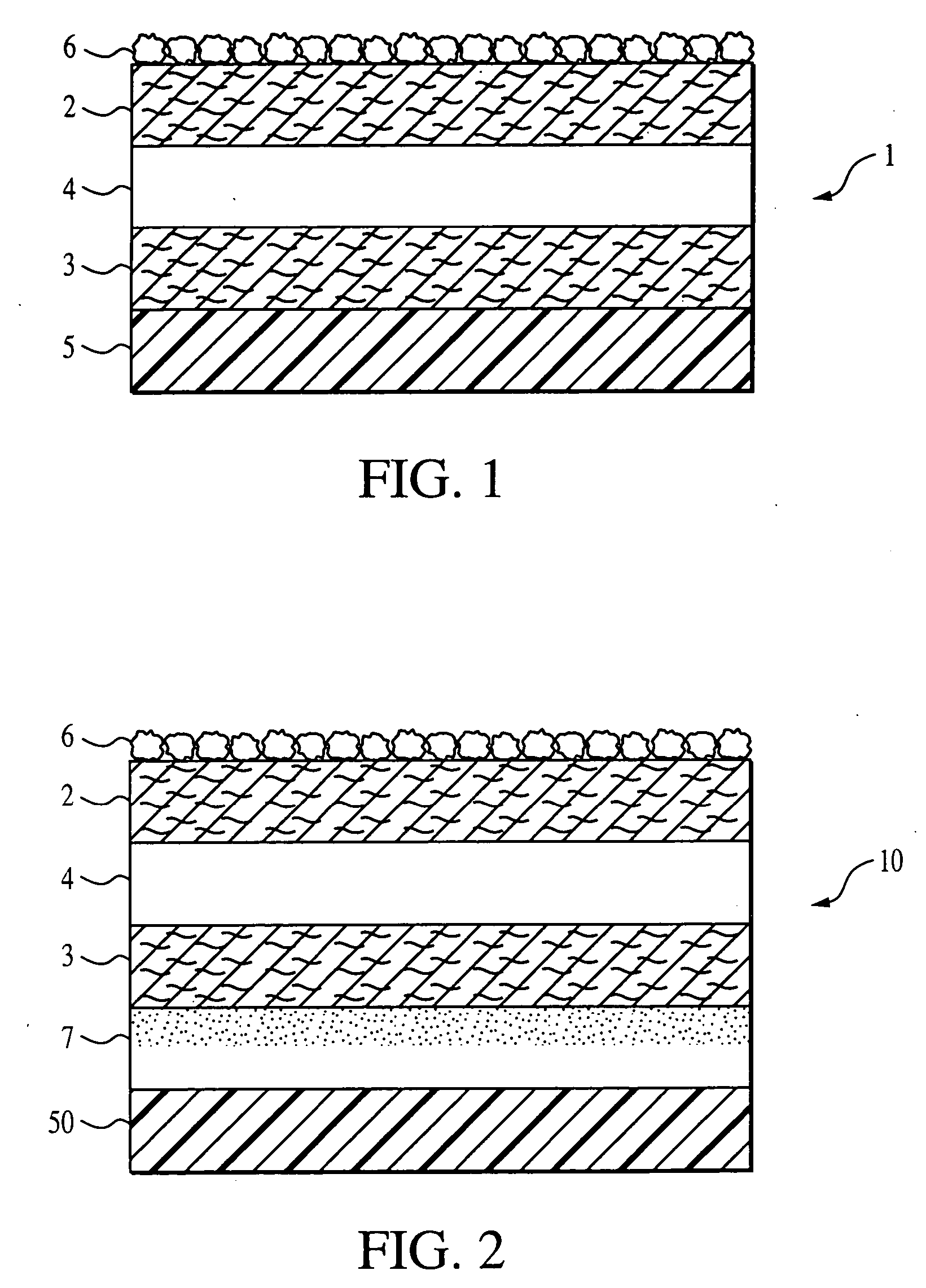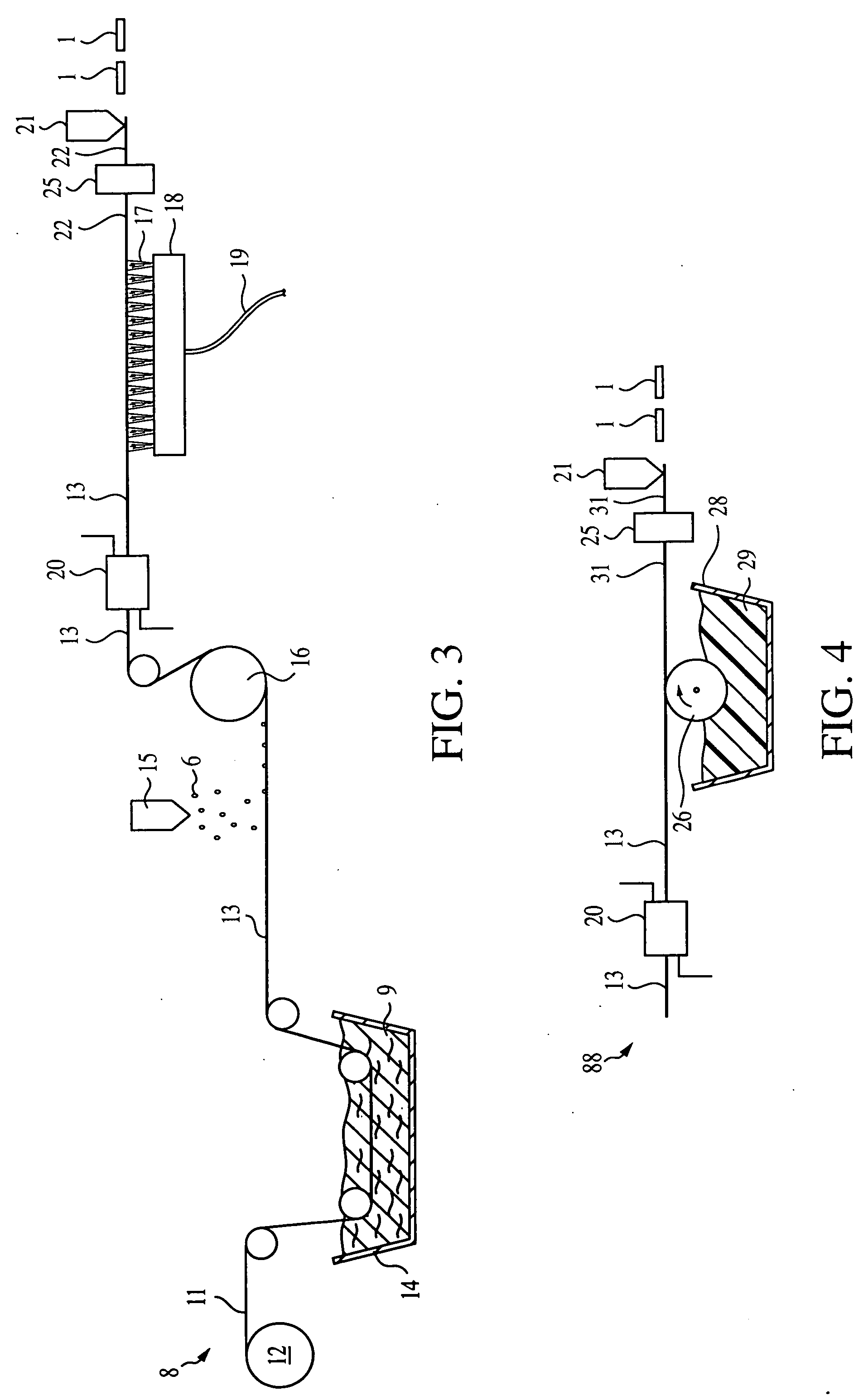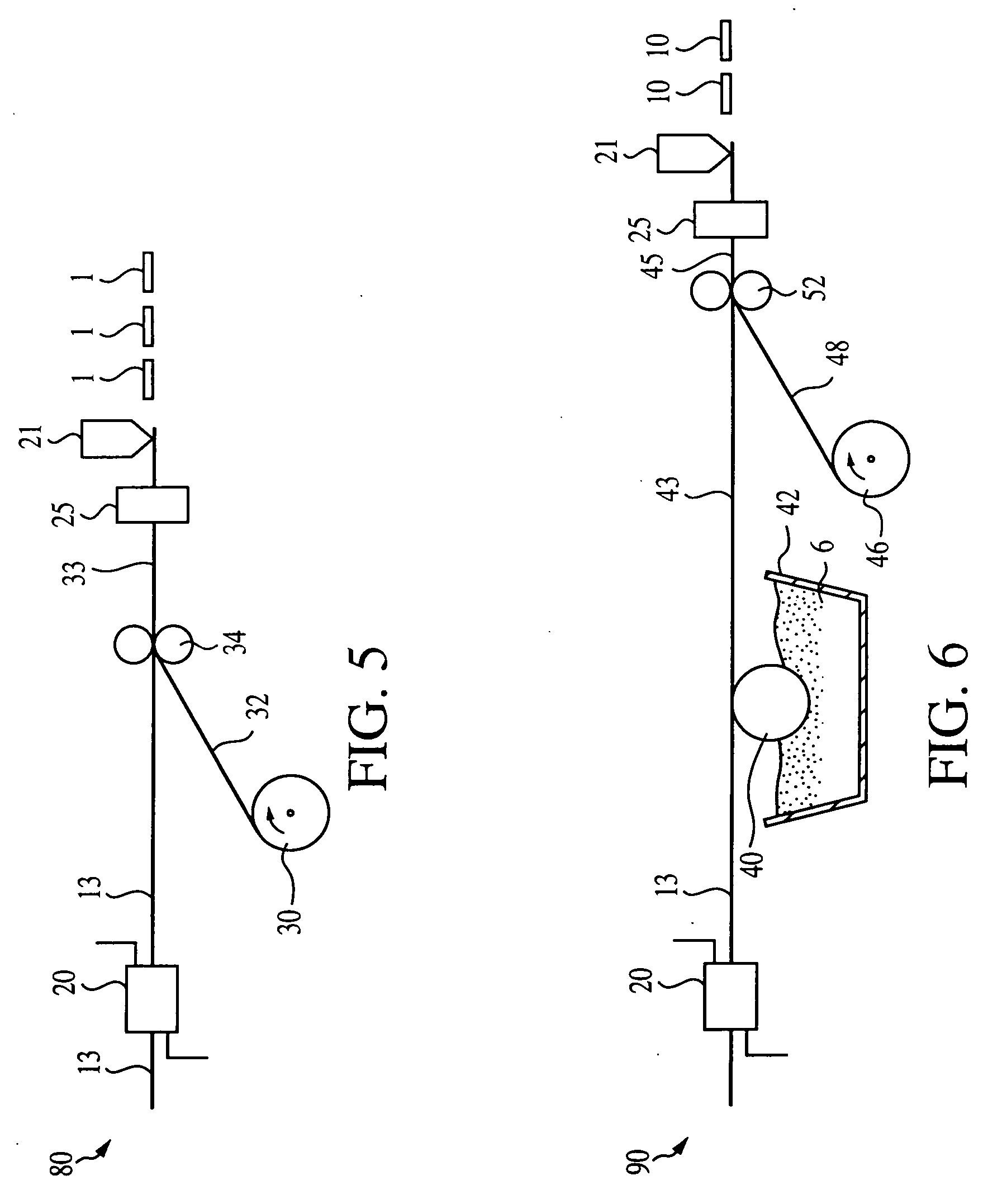Impact resistant roofing shingles and process of making same
a technology of impact resistance and roofing shingles, which is applied in the direction of chemistry apparatus and processes, weaving, synthetic resin layered products, etc., can solve the problems of increasing the cost of asphalt coating raw materials, not being very effective in resisting, and plain and rocky mountain states are particularly susceptible to roofing damage, etc., to achieve simple design and manufacture, and minimal cost increase
- Summary
- Abstract
- Description
- Claims
- Application Information
AI Technical Summary
Benefits of technology
Problems solved by technology
Method used
Image
Examples
first embodiment
[0031] the process of preparing an impact resistant roofing shingle of the type illustrated by roofing shingle 1 is depicted by apparatus 8. Apparatus 8 includes a roll 12 from which a continuous sheet 11 is payed out. The substrate sheet 11 is passed through a coater 14 filled with asphalt 9. The substrate sheet 11 is thus immersed in the asphalt to completely coat the substrate sheet 11 with a tacky asphalt coating. Although the preferred method of asphalt coating is depicted in apparatus 8, it should be appreciated that other methods, such as by roll application, by spray application, extrusion coating and the like may be employed.
[0032] Insofar as the substrate web 11 downstream of the asphalt coating step is an asphalt coated substrate web, it is identified as web 13. Web 13, coated with tacky asphalt, is, in the preferred embodiment wherein roofing shingle 1 includes granules on its top surface, next passed under a granule dispenser 15 where granules 6 are released onto the to...
second embodiment
[0039] This second embodiment of roofing shingles 1 is prepared in a process utilizing apparatus 88. Apparatus 88 is identical to apparatus 8 upstream of the downstream end of drying station 20. However, in apparatus 88 the bottom side of dried asphalt coated web 13, downstream of drying station 20, is contacted by a coating roll 26. Coated roll 26 is in communication with modified asphalt 29 disposed in container 28. The bottom side of web 13 is roll coated with a layer of modified asphalt, denoted, downstream of the coating step, as web 31. The processing steps subsequent to modified asphalt coating include drying the modified asphalt coated web 31 a drying station 25 followed by cutting of web 31 into shingles 1. Drying station 25 is the same type of apparatus as is drying station 20.
[0040] It is noted that the depiction of impact resistant roofing shingle 1 in FIG. 1 illustrates the layer at the bottom of the asphalt coated substrate to be a plastic, whereas asphalt coatings 2 a...
third embodiment
[0044] The product of this third embodiment is, like the first two embodiments, an impact resistant roofing shingle 1. This is so insofar as the organic film layer 5 of the generic shingle 1 is provided, in this embodiment, by the plastic film of web 32. That is, there is no adhesive bonding the asphalt coating 3 to the plastic film of web 32. The adhesive, bonding the asphalt coating 3 to the plastic film of web 32, is the asphalt coating 3 itself. This is so since the plastic film of web 32 has a melting point, in the embodiment wherein the plastic film is a thermoplastic, or a decomposition temperature, in the embodiment where in the plastic film is a thermosetting resin, higher than the melting temperature of the asphalt coating. The natural tackiness of the asphalt, when compressed with the plastic film web 32 at nip rolls 34, causes the asphalt coating to act as an adhesive.
[0045] Although any plastic film having a melting or decomposition temperature higher than the melting p...
PUM
| Property | Measurement | Unit |
|---|---|---|
| Temperature | aaaaa | aaaaa |
| Adhesivity | aaaaa | aaaaa |
| Melting point | aaaaa | aaaaa |
Abstract
Description
Claims
Application Information
 Login to View More
Login to View More - R&D
- Intellectual Property
- Life Sciences
- Materials
- Tech Scout
- Unparalleled Data Quality
- Higher Quality Content
- 60% Fewer Hallucinations
Browse by: Latest US Patents, China's latest patents, Technical Efficacy Thesaurus, Application Domain, Technology Topic, Popular Technical Reports.
© 2025 PatSnap. All rights reserved.Legal|Privacy policy|Modern Slavery Act Transparency Statement|Sitemap|About US| Contact US: help@patsnap.com



